Industrial_Control_Panel_Build_Series_Part_4_IO_Hardware_Selection.pdf
Going through the process of deciding which hardware is needed for our control panel
Transcript:
[0m:4s] Hi I'm Josh Bloom, welcome to another video in the RSP Supply education series. If you find that these videos are helpful to you, it certainly helps us out if you could give us a big thumbs up and subscribe to our channel.
[0m:16s] In today's video, we will move on to the next step in our panel fabrication series. If you haven't already seen the other videos in this series, we encourage you to go back and watch from the beginning of the series so that you might better understand the entire process.
[0m:31s] The step in which we will focus on today is beginning to determine the IO related hardware that will be needed based off of the IO requirements, which have already been determined. This IO hardware will include the PLC, any terminal blocks, relays, signal protection devices, and all other hardware related to the IO in the panel. There are many things that she would be considered when making these selections. So, let's get into it.
[0m:59s] So, before any hardware is actually selected, it is important to review the IO counts and the IO that's coming in and out of our PLC to make sure that they're actually correct, because the PLC hardware and terminal block counts all have to match the IO information that we are planning for. So, it's important to make sure that our accounts are correct. This is absolutely critical before we actually select any of our IO hardware.

[1m:26s] The first thing that we're going to look at as far as IO hardware selection is the PLC. The PLC is going to be the heart of our control panel, it should be the first piece of hardware that is selected.
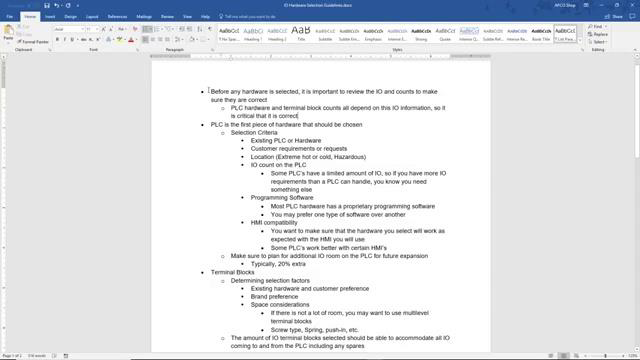
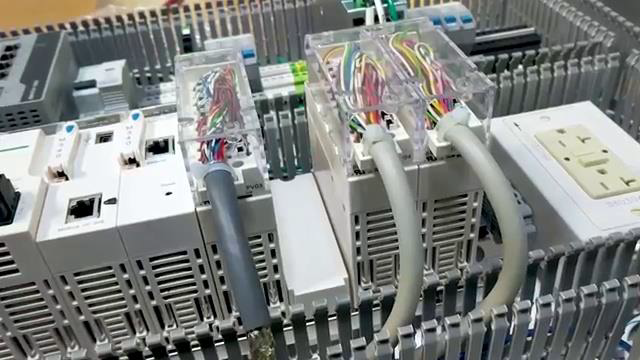
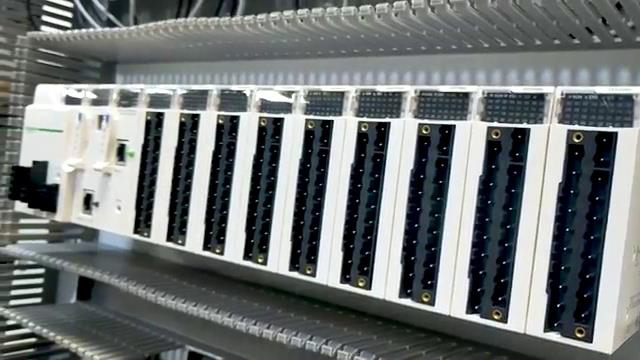
[1m:36s] A few things when we're determining what type of PLC we should select are first any existing hardware that might be in place for your client or any specific client requirements or requests. We want to make sure that we meet or match any existing hardware that's in place. And also, always ask the client what they have used in the past and what they prefer. We want to make sure that we meet those demands or requests from our client. The next thing we want to look at is the location that the control panel will be located in,

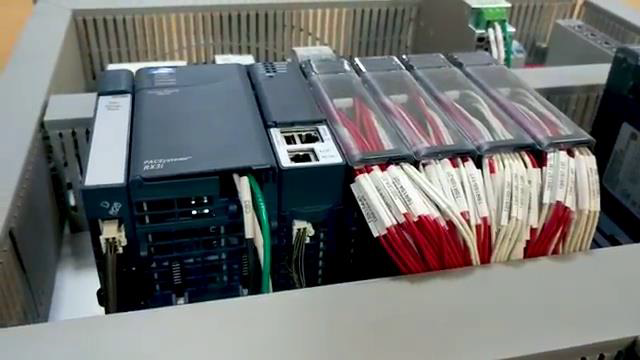

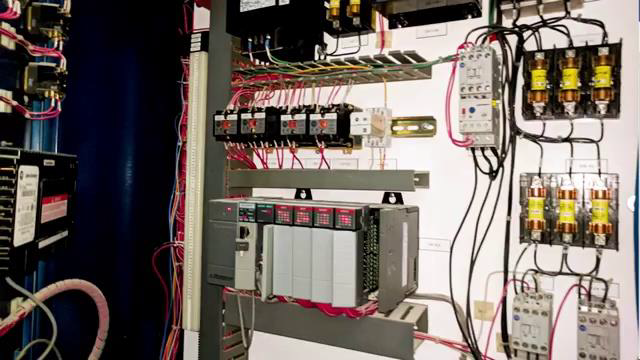
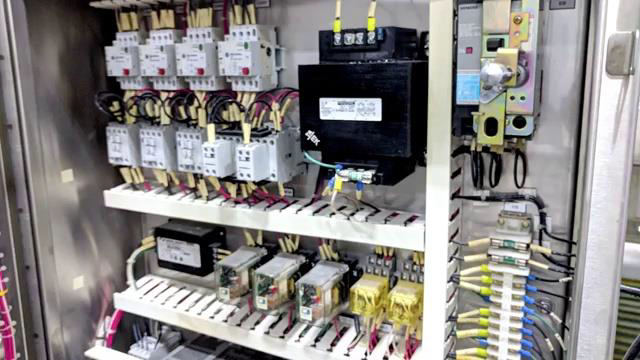

[2m:9s] if it's going to be in
[2m:12s] a harsh environment, whether that's extreme temperature, either cold or hot. We want to make sure that the PLC that we select can handle that type of extreme environment. We also want to make sure that we know that if the panel is going to be located in a class one Div 2 or class one class 1 environment. We want to make sure that the PLC is rated for those types of conditions and can handle that type of environment. So, location is very critical in selecting our PLC.
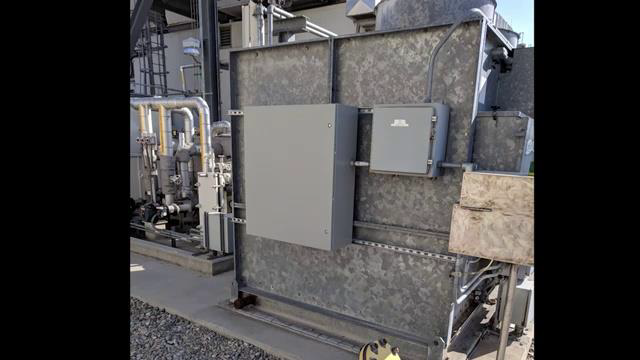
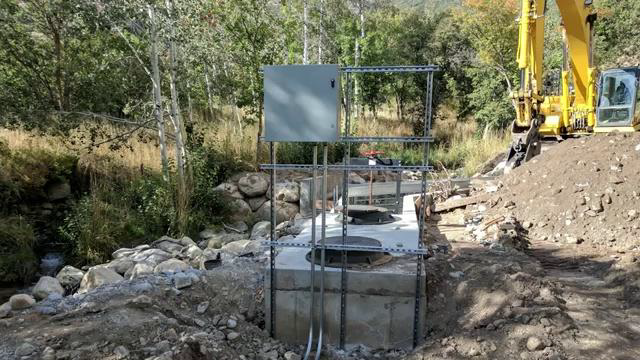
[2m:38s] The next thing we want to look at, again, with the PLC is the IO count. Now, some PLCs have a limited amount of IO that you can actually hook into so, if you have more IO requirements than the PLC can actually handle, you need to make sure that you find a different PLC.
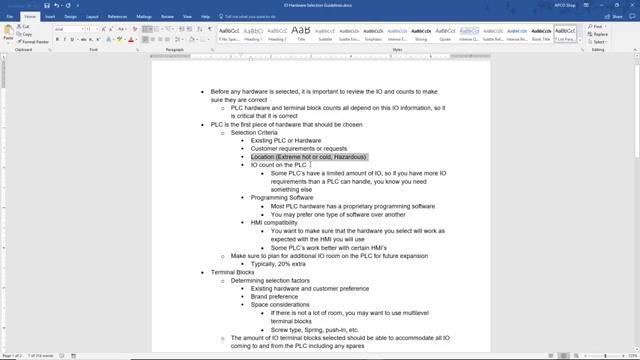
[2m:54s] The next thing we should look at is the programming software that the PLC is to be intended to be used with.
[3m:0s] So, most manufacturers have some sort of proprietary programming software that needs to be used. So, you want to make sure that you select the PLC that you're familiar with and that the programming software or something that you can use and this can be a personal preference or something the customer ID might even prefer. So, we need to make sure we look at the programming software is intended to be used with that PLC.
[3m:24s] One of the other things you want to look at when selecting a PLC is HMI compatibility. We want to make sure that the PLC that we select is compatible with the HMI that we intend to use. Now, most PLCs and HMIs are compatible, but some work better
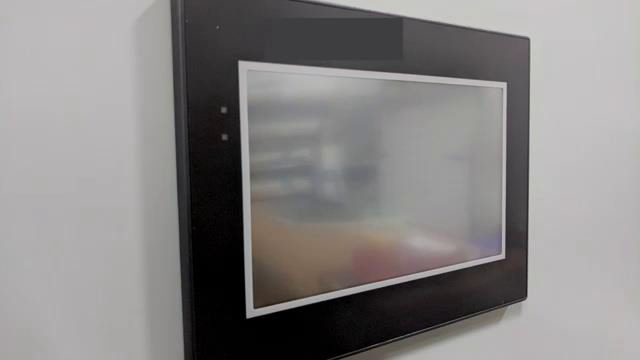
[3m:38s] with certain HMIs than others. So, we want to make sure that when we select our PLC, we know that it will work with the HMI that we intend to use. And then, the last thing we want to think about when selecting our PLC is to make sure that we have additional room for any new IO that might come in the future. Typically, we want to make sure that we have at least extra or spare IO available. So, we want to make sure when we pick our PLC that we have the ability to have that spare IO for any future expansion that the client might want to do.
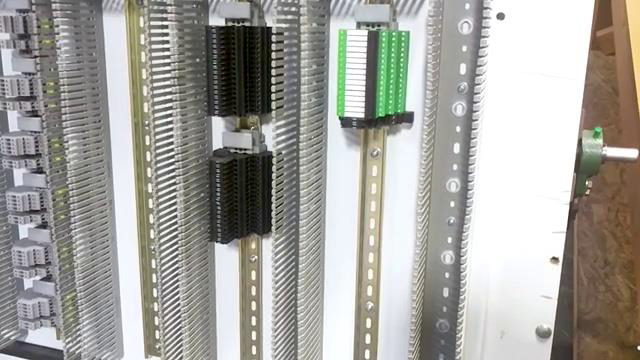
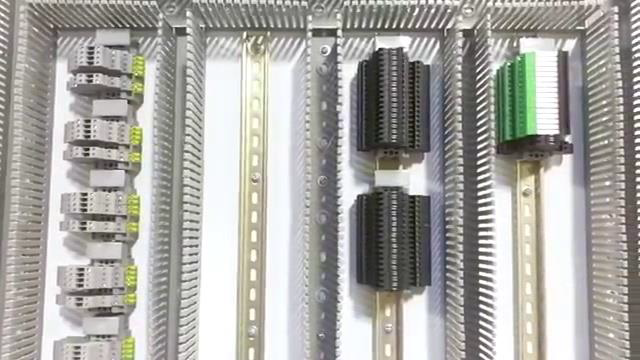
[4m:9s] The next type of IO hardware we're going to look at is terminal blocks. Now, terminal blocks are simply what we plug our incoming and outgoing IO into. We want to make sure the amount of terminal blocks that we are purchasing for this particular panel matches the amount of IO that our PLC will have.
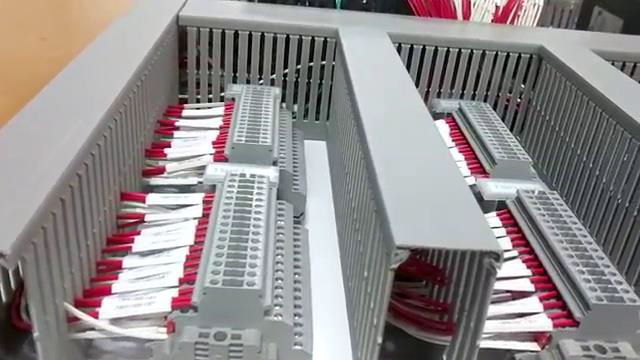
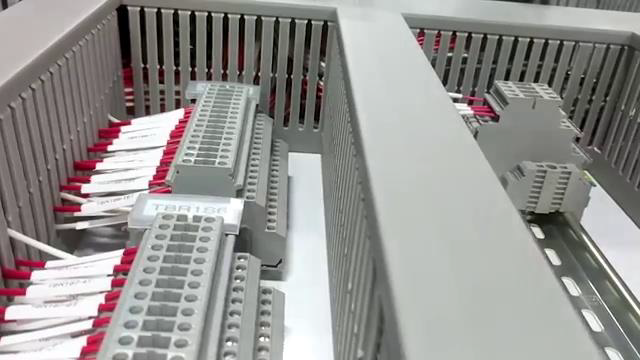
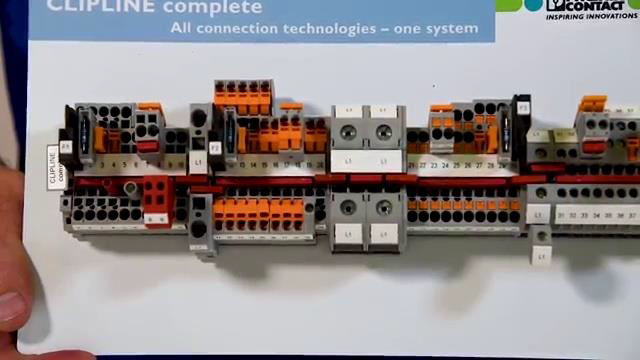
[4m:28s] Because we want to make sure, even with the spare, we want to make sure that we have enough terminal locks to accommodate all the IO the PLC has. A few things to consider when selecting a term of block is, again, any existing hardware or customer preference that might be in place. We always want to make sure, we take that into consideration. Any brand preference that you might have or the customer might have.
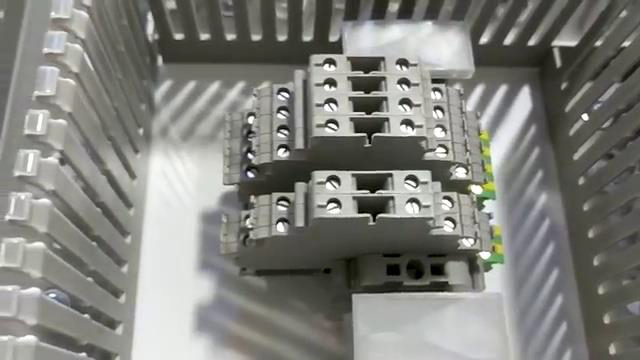
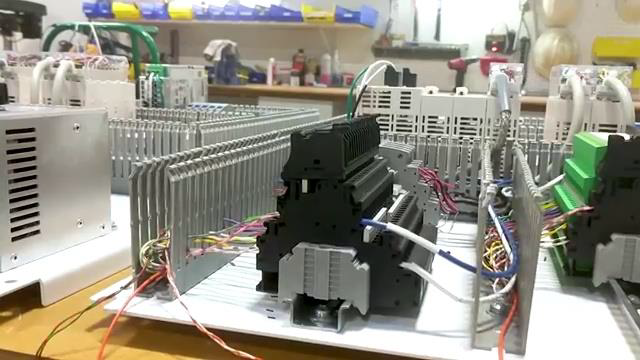
[4m:49s] We want to also look at space consideration. This is very important. If the panel that we're building is going to be tight on space, we may want to look at multilevel terminal block to save on that space. So, again, space consideration when select the terminal blocks is very important. Then we also want to look at what type of terminal block we want to use in more specifically, is it a screw type or a spring or push in terminal block? There are several different types of terminal blocks that can be used. We want to determine which one is going to be best for our specific application.
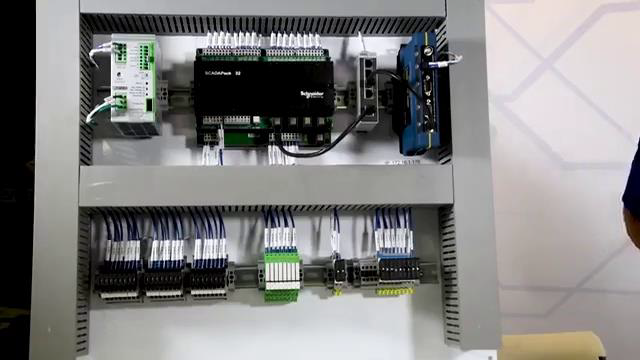
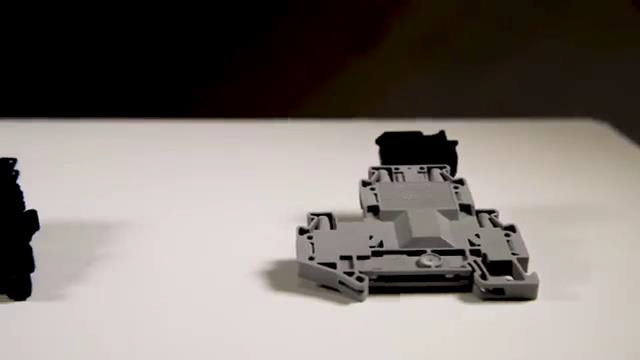
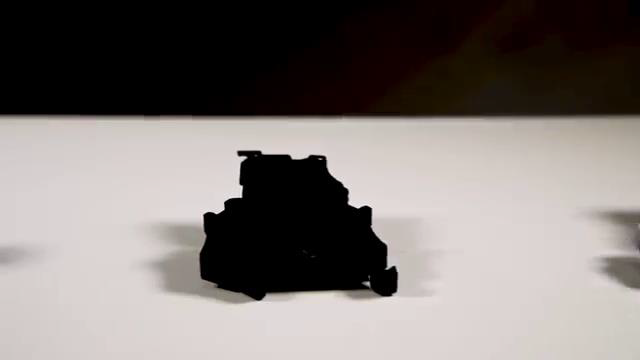
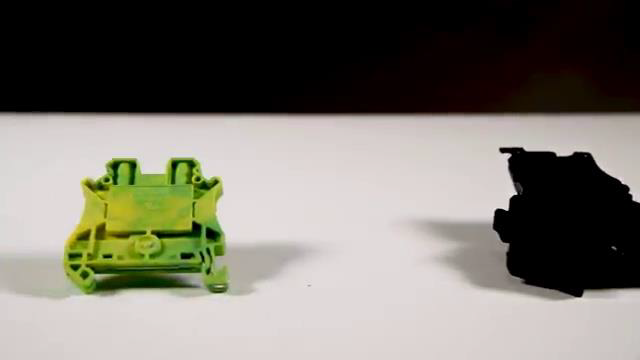
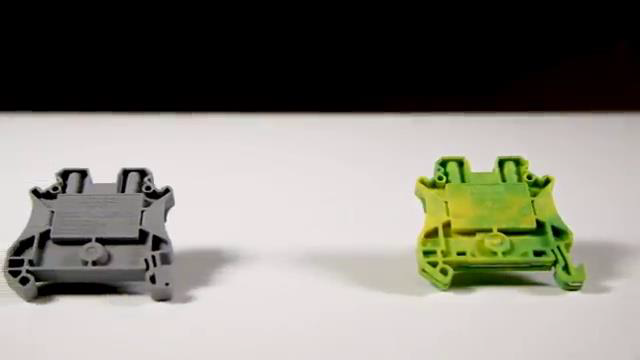
[5m:19s] Along with terminal blocks, another thing you're going to look at is a relay. Relays are typically used with some sort of digital output. Very similar considerations we take with relays as we do with our terminal blocks, existing hardware or customer preference, things like that. We also want to look at do we want any kind of light indication when the relay is energized, space considerations that relays come many different shapes and sizes, we want to take all those things into consideration one selecting our relays.
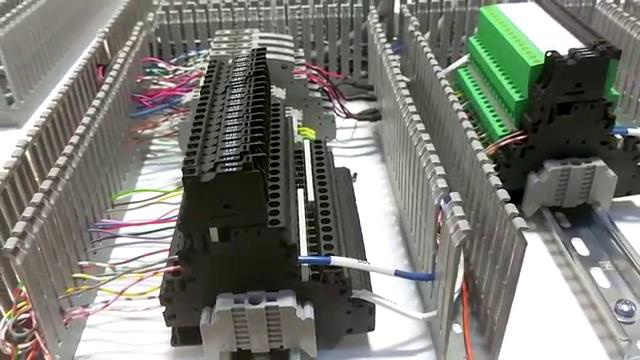

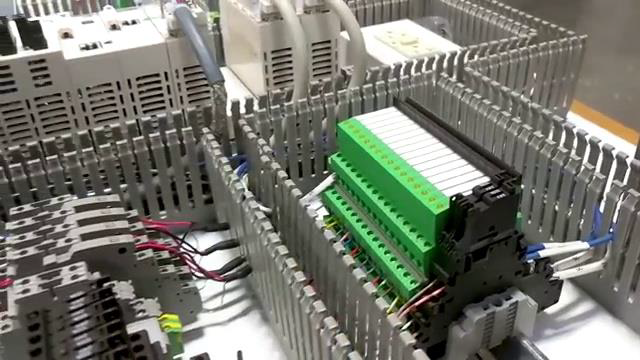
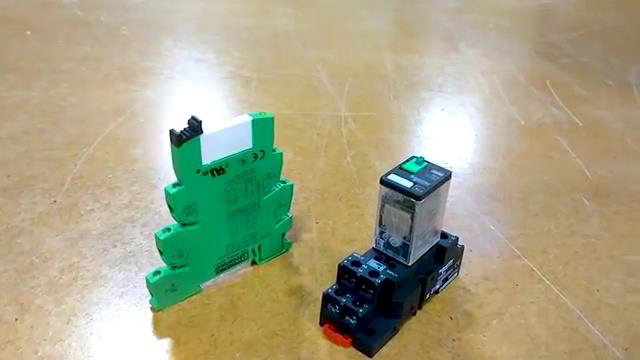
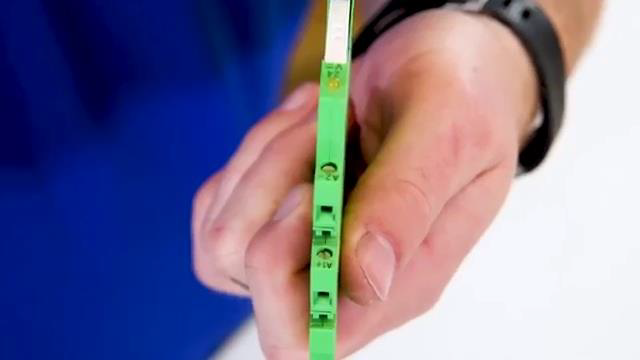
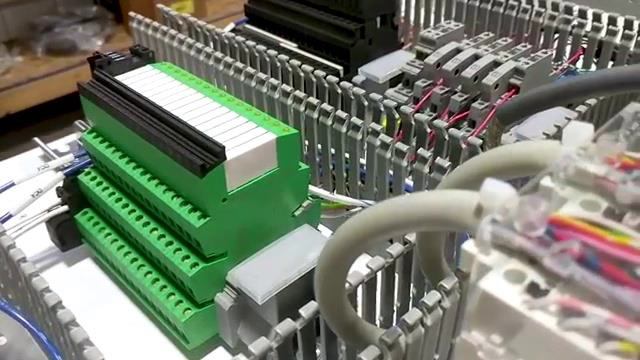

[5m:46s] The next we want to look at is surge protection or any kind of signal protection. So, we use surge protection for a lot of our analog signals, especially those types of signals that are going to be exposed to the outdoor environment. We use surge protection to protect against any power surge or lightning strike so that the sensitive equipment within our control panel does not become damaged. This is also the time to look at if we need any kind of signal isolators or signal splitters, we need to make these decisions now so we know if it's going to fit in our control panel and make sure that all the IO hardware that we're purchasing will work with everything that we have in our panel. The last thing you want to look at is just kind of the accessories to go with the IO hardware that you're selecting. An example, this might be maybe any Prewired factory wire harnesses that go with the PLC. Many PLCs have these Pre wired harnesses so that you don't actually have to physically wire the PLC side, you're only wiring down to your terminal blocks. So, you want to consider any of these kind of accessories that may go with any of your PLCs or terminal blocks or the other IO hardware that you're selecting.
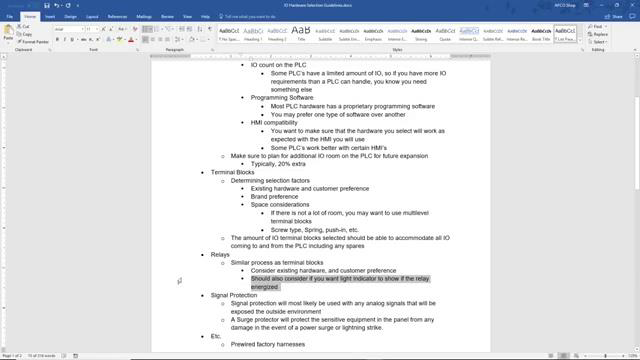
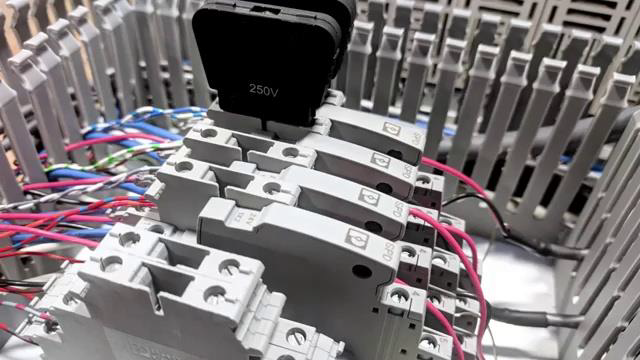

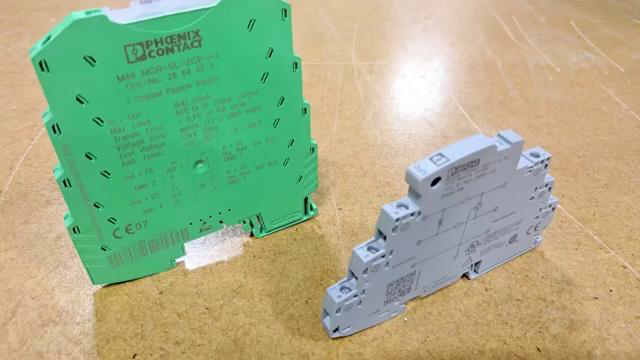
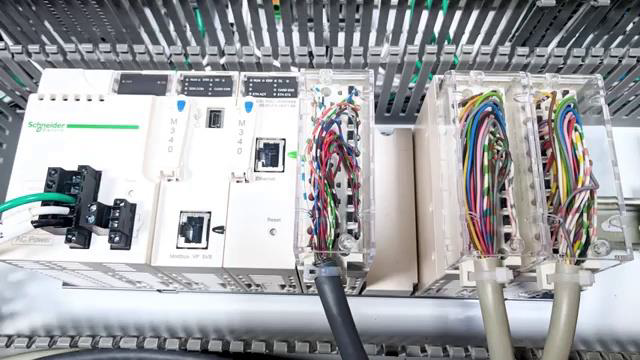
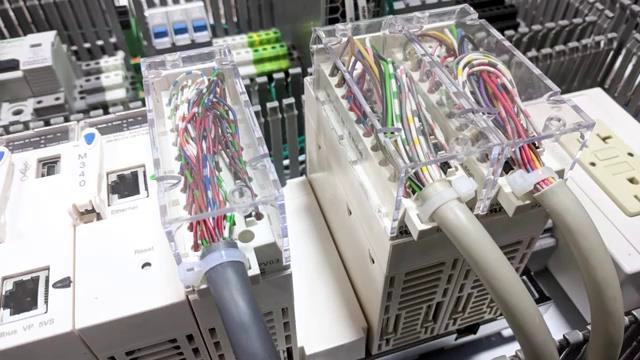
[6m:53s] Once you have made these decisions in relationship to the IO hardware selection process, at that point you can actually move on to the next stages of the build process which involves preliminary design and more hardware purchasing decisions.
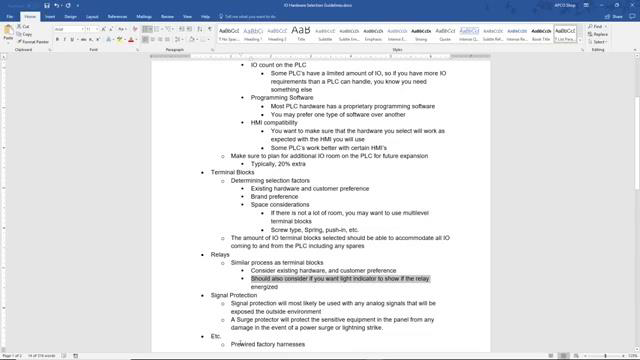
[7m:7s] As you can see, there is a lot to consider when making your IO hardware selections for any industrial control panel. It is important to take your time and get this step right. As always, we appreciate your interest in the series and hope that you stay with us as in the next video, we will talk about selecting hardware that is needed for the power distribution portion of this panel. So, make sure to join us next time as we continue to build.
[7m:32s] For a full line of industrial control panel hardware and thousands of other products, please go to our website. For more information or other educational videos, go to RSPSupply.com, the Internet's top source for industrial hardware. Also, don't forget: like and subscribe.




